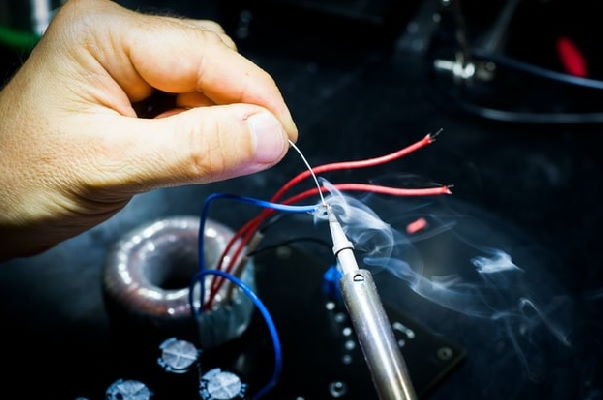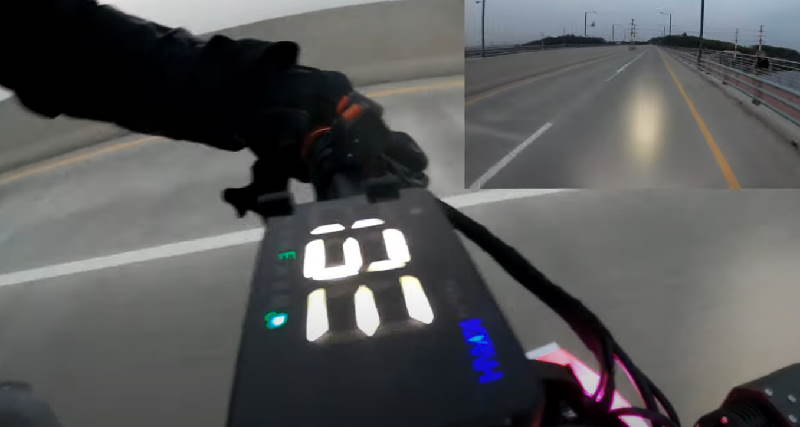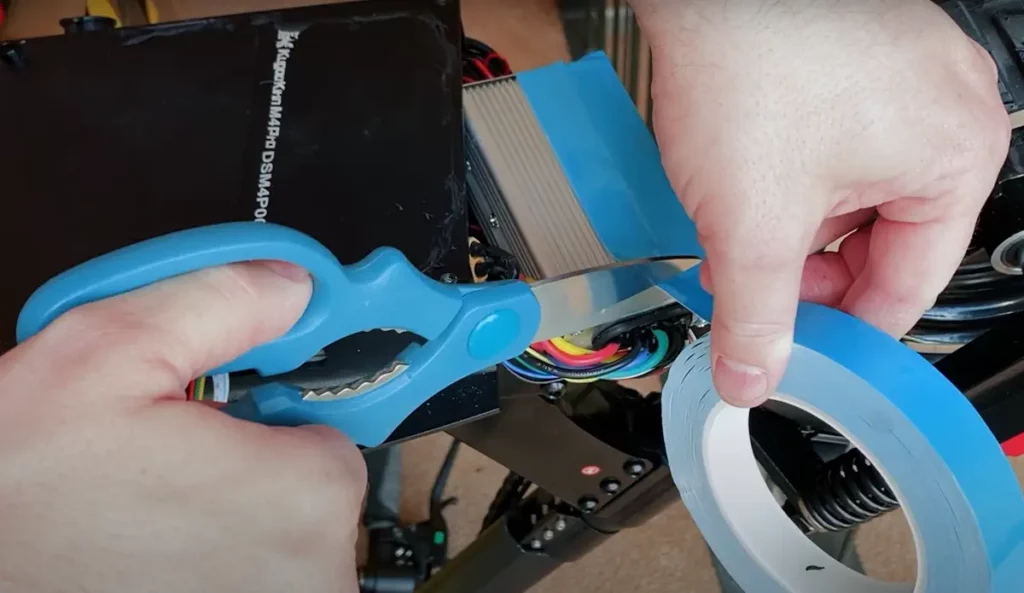The electric scooter battery is the only major expense you will have related to your electric scooter, and because they aren’t budget-friendly, lots of scooter riders are curious about the electric scooter battery lifespan.
So in this article, I’ll discuss how long do electric scooter batteries last and how you can increase your electric scooter battery life.
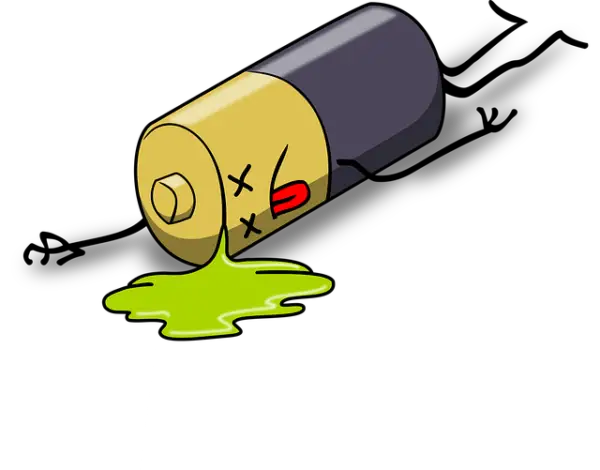 Don’t let your battery get completely drainedDifficulty: easyCost: freeRisk: freeAvoid fully discharging the battery as doing so can accelerate wear and may require a different charger to revive it if it reaches a complete discharge state.
Don’t let your battery get completely drainedDifficulty: easyCost: freeRisk: freeAvoid fully discharging the battery as doing so can accelerate wear and may require a different charger to revive it if it reaches a complete discharge state.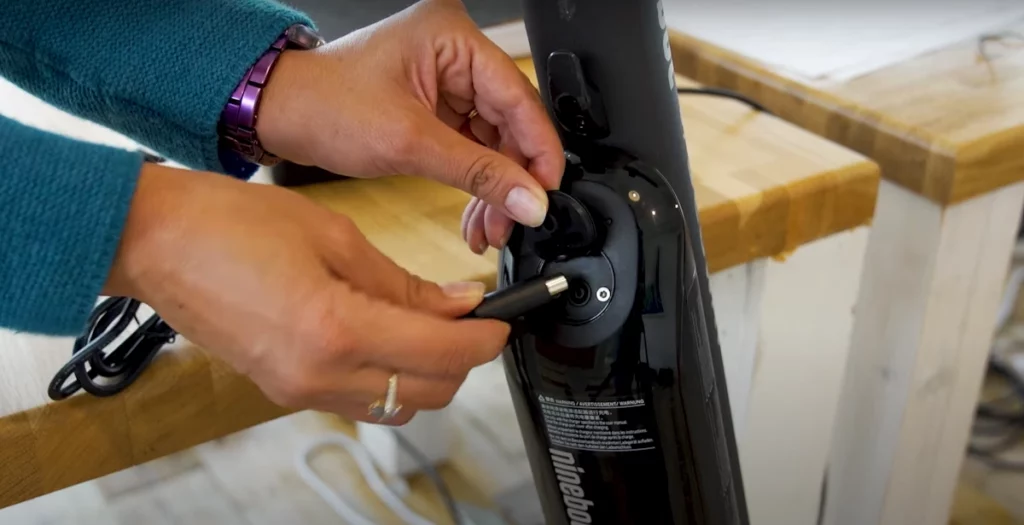 Charge your scooter frequentlyDifficulty: easyCost: moderateRisk: freeCharge your scooter after every use, allowing a half-hour cool-down period before connecting the charger to prevent faster degradation.
Charge your scooter frequentlyDifficulty: easyCost: moderateRisk: freeCharge your scooter after every use, allowing a half-hour cool-down period before connecting the charger to prevent faster degradation. Avoid overcharging your batteryDifficulty: easyCost: freeRisk: freeMany electric scooters can handle overcharging without damage, it’s still recommended not to risk it, as some risk of damage exists.
Avoid overcharging your batteryDifficulty: easyCost: freeRisk: freeMany electric scooters can handle overcharging without damage, it’s still recommended not to risk it, as some risk of damage exists.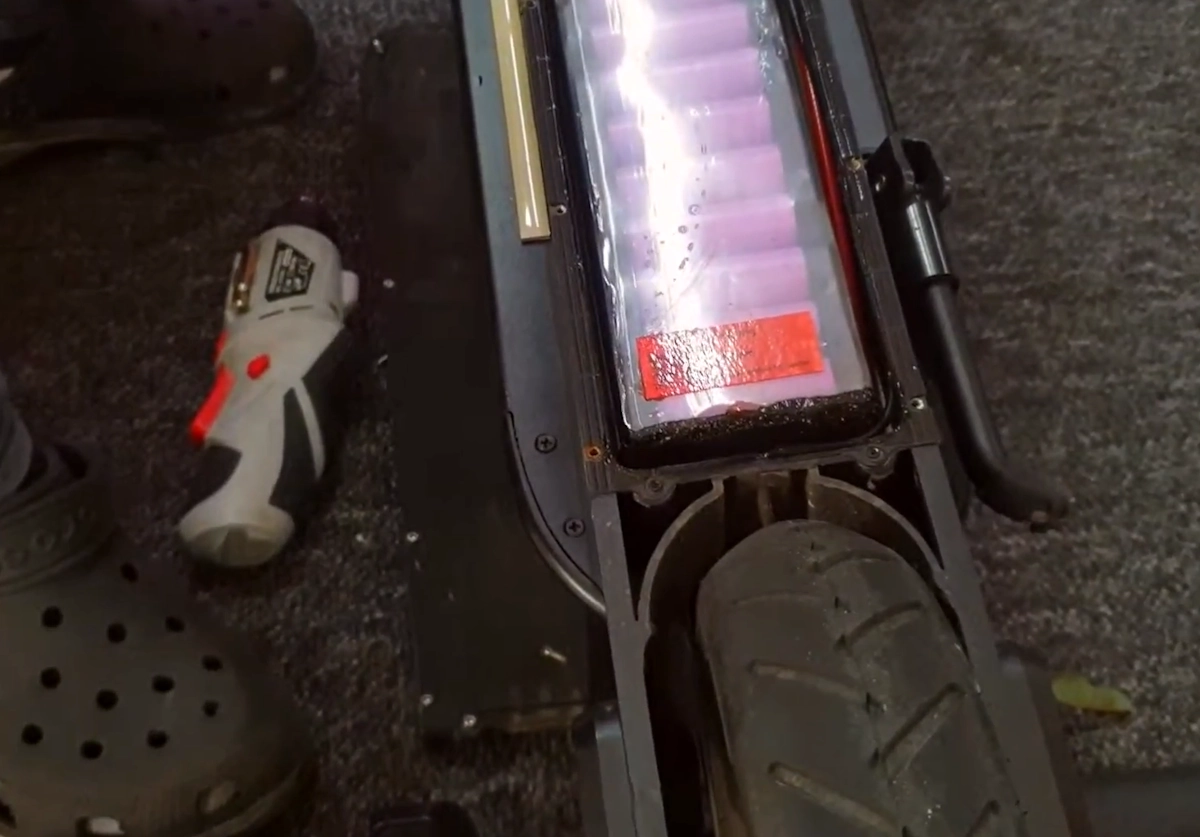 Avoid water contactDifficulty: moderateCost: freeRisk: freeAvoid wet conditions as water can affect the battery’s longevity and cause corrosion and wear.
Avoid water contactDifficulty: moderateCost: freeRisk: freeAvoid wet conditions as water can affect the battery’s longevity and cause corrosion and wear. Watch the temperatureDifficulty: easyCost: freeRisk: freeElectric scooter batteries perform best at around 20 °C, with efficiency decreasing below 0 °C or above 40 °C.
Watch the temperatureDifficulty: easyCost: freeRisk: freeElectric scooter batteries perform best at around 20 °C, with efficiency decreasing below 0 °C or above 40 °C. Shield your battery from sun exposureDifficulty: easyCost: freeRisk: freeDon’t charge the battery in direct sunlight as it can trigger safety mechanisms or damage the protection circuit, posing safety risks.
Shield your battery from sun exposureDifficulty: easyCost: freeRisk: freeDon’t charge the battery in direct sunlight as it can trigger safety mechanisms or damage the protection circuit, posing safety risks.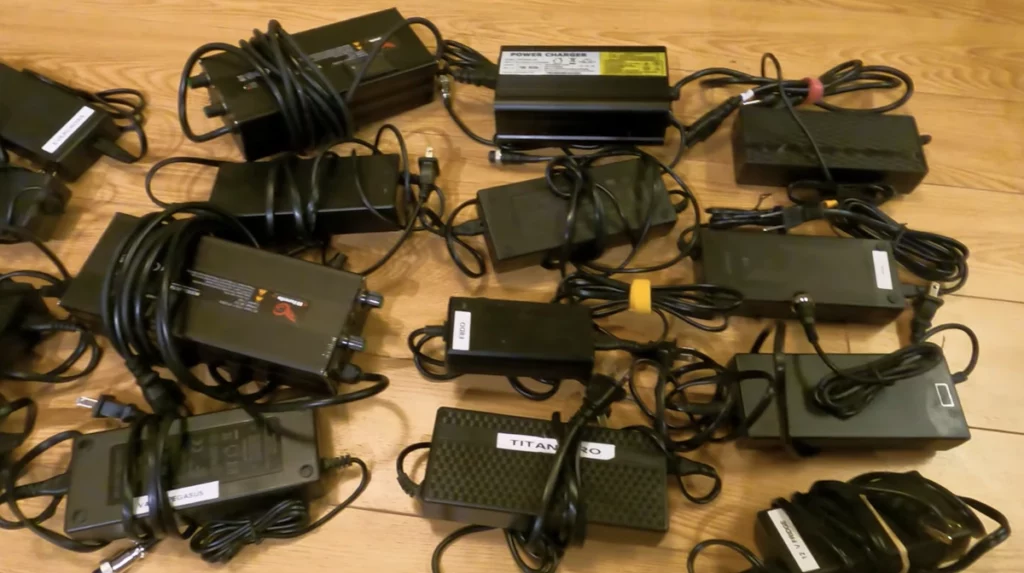 Use the original chargerDifficulty: easyCost: expensiveRisk: freeUse the original charger that came with your scooter to ensure optimal charging for battery longevity and performance.
Use the original chargerDifficulty: easyCost: expensiveRisk: freeUse the original charger that came with your scooter to ensure optimal charging for battery longevity and performance.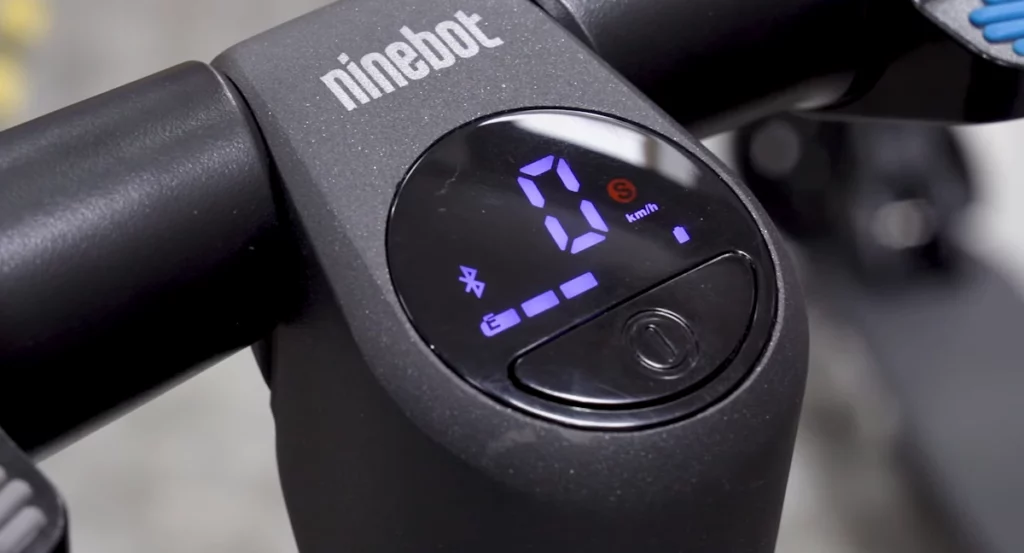 Charge at the normal or slower rateDifficulty: easyCost: freeRisk: freeAvoid using chargers with higher charge capacities, especially if you frequently need to charge your e-scooter.
Charge at the normal or slower rateDifficulty: easyCost: freeRisk: freeAvoid using chargers with higher charge capacities, especially if you frequently need to charge your e-scooter.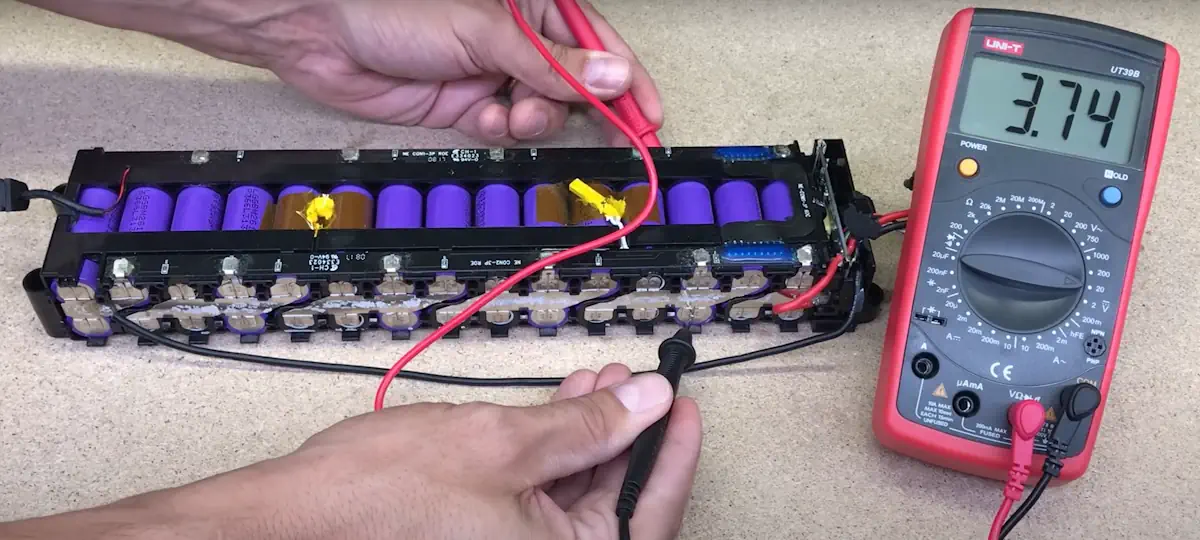 Inspect your batteryDifficulty: hardCost: expensiveRisk: freeIf you suspect issues, consider more advanced tests such as voltage, current, temperature, specific gravity, impedance, or discharge testing, using appropriate equipment.
Inspect your batteryDifficulty: hardCost: expensiveRisk: freeIf you suspect issues, consider more advanced tests such as voltage, current, temperature, specific gravity, impedance, or discharge testing, using appropriate equipment.
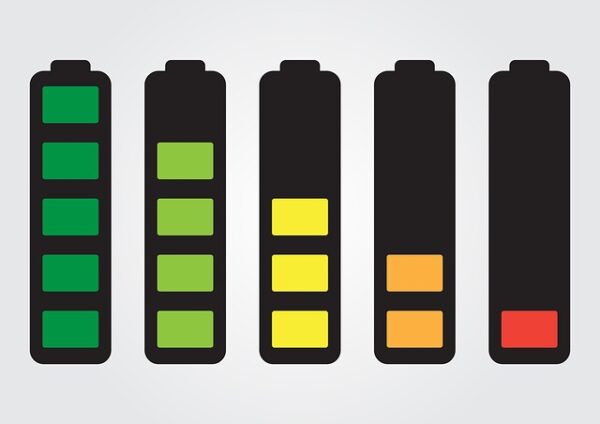
How to increase electric scooter battery life
We will go over a list of everything you can do, starting from the most important and impactful ways.
Don’t let your battery get completely drained

To extend the battery life, the key is to avoid complete draining of the battery.
While it’s not catastrophic, it’s essential to remember that each full discharge of an electric battery accelerates wear and tear.
In certain lithium-ion batteries, an automatic mechanism triggers when the battery empties, rendering it unresponsive to a standard charger and potentially appearing completely dead. Resurrecting such a battery might require a different charger, typically found in older models, but this situation is still prevalent.
Charge your scooter frequently

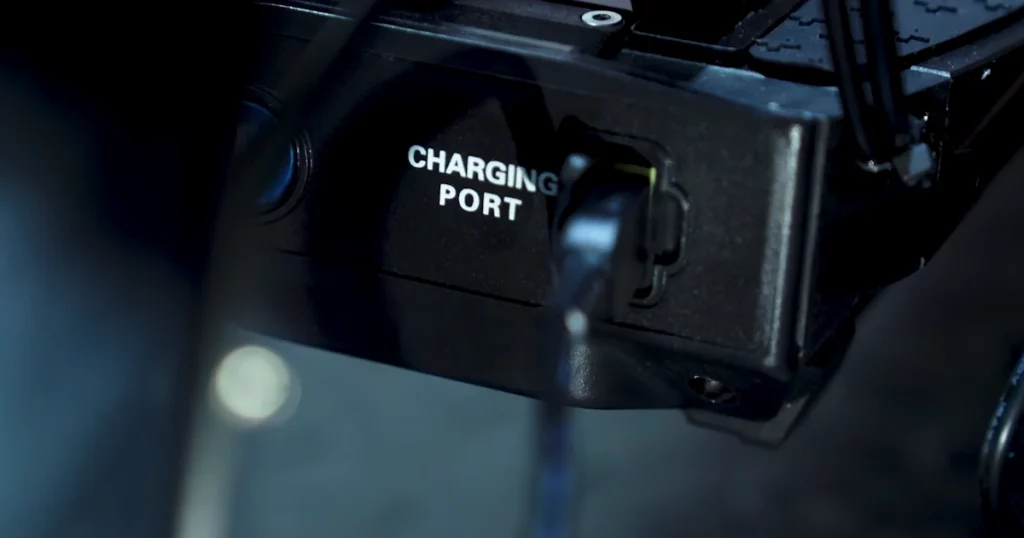
The next crucial step for your scooter’s battery is frequent charging. Experts advise charging after every use, regardless of the distance.
The frequency may differ based on the battery type, so it’s a good idea to consult the scooter’s manual for guidance. If not specified, charging your scooter daily after use is generally the best practice.
However, a crucial point to remember is not to charge your scooter immediately after a ride. Allow it to cool down for about half an hour before connecting the charger. Charging a hot battery can lead to faster degradation.
Avoid overcharging your battery
While many electric scooters today will not be damaged if you leave them charging after the battery is full, it is still not smart to risk it. The chances for damage are small, but they do exist.
Many scooter apps can send you a notification when the battery is fully charged.
Avoid water contact
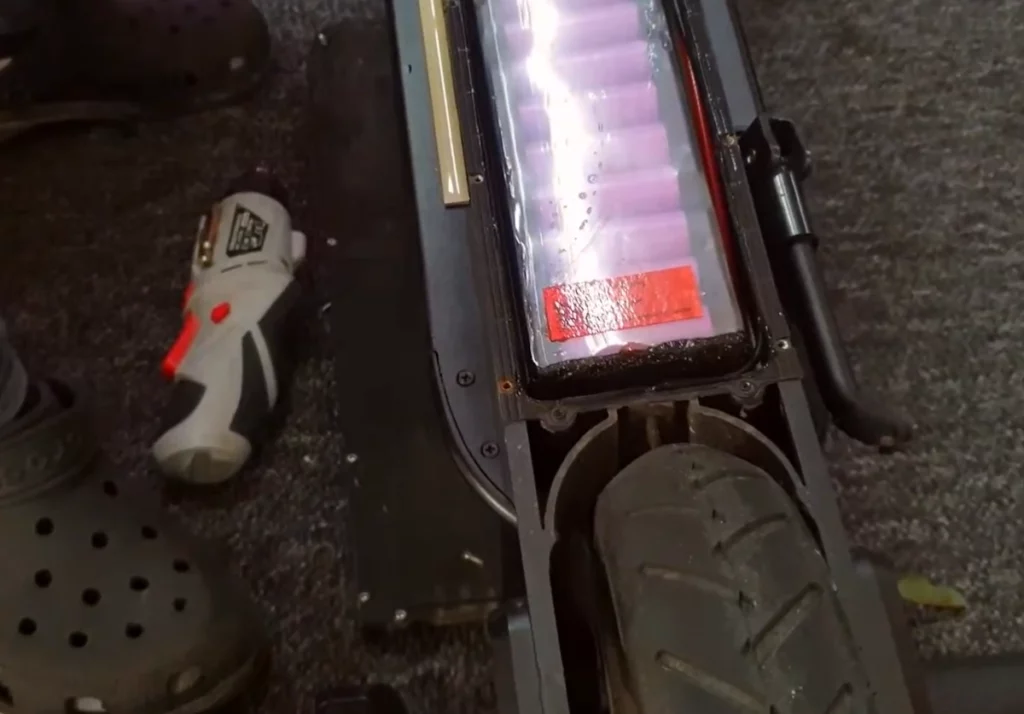

It’s not just about extending the battery’s life; it’s about shielding it from harm.
While most scooter makers claim water resistance, only about half have an official IP rating for it. However, all brands agree on one thing: avoid wet conditions when riding.
This caution is mainly because of the battery’s vulnerability, a critical scooter component. Even if you’re not using your electric scooter in the rain, the battery compartment can soak up water from a wet road. Small amounts of water might not immediately harm the battery, but they can cause corrosion and speed up wear and tear.
To protect your scooter’s battery, keep it as dry as possible.
Watch the temperature
Electric batteries perform optimally at room temperature. Significant deviations from this range result in reduced efficiency and quicker degradation.
The ideal operating temperature for batteries is around 20 °C. Performance diminishes when used below 0 °C or above 40 °C.
Maximize the battery’s lifespan by using it within this ideal temperature range. If that’s not possible, it’s advisable to refrain from using your scooter in extremely cold or hot conditions.
Shield your battery from sun exposure
Prolonged sun exposure can trigger adverse chemical reactions in your battery, potentially leading to complete failure or significant performance degradation.
Charging your battery in direct sunlight might engage safety mechanisms that inhibit charging. Worse still, it could damage the protection circuit, resulting in overheating or even a risk of explosion.
Use the original charger

Using the original charger that came with your scooter is the best way to ensure an optimal charge. It’s designed for your battery’s longevity and performance.
If you encounter charger issues, obtaining the same charger from the same manufacturer is an equally good choice.
When using a different charger, aim to match its voltage and charge capacity as closely as possible to the original.
Reserve using a charger with significantly different specifications as a last resort.
Charge at the normal or slower rate

Users that go long distances with their e-scooters often need to charge them more than once a day.
To do this, sometimes they use chargers with higher charge capacities (expressed in Ampere-hours, or Ah). These charge the batteries faster, but they also make them deteriorate faster and reduce their lifespan.
If battery lifespan is important to you, avoid using chargers with higher charge capacities altogether and stick with the original charger.
Inspect your battery
It is very smart to incorporate at least a quick battery inspection as part of your regular maintenance routine.
You can apply other more advanced battery testing methods less frequently. If you lack the equipment for that, you don’t really need to test the battery unless something feels wrong. Common methods for battery testing include:
- voltage testing
- current testing
- temperature testing
- specific gravity measurement
- impedance article
- discharge testing (requires a full discharge, so not always optimal)
For these tests, you will need to get a battery testing set, or take your scooter to an expert.
Electric scooter battery life
Electric scooter battery life is a vital factor to consider for both daily commuters and recreational riders.
The longevity of an electric scooter’s battery depends on several factors, including the quality of the battery, how it’s maintained, and the usage patterns. Typically, a well-maintained lithium-ion battery in an electric scooter can last around 2 to 4 years or approximately 300 to 500 charging cycles.
However, extreme temperatures, frequent deep discharges, and overcharging can significantly impact the battery life.
To maximize the lifespan of your scooter’s battery, it’s essential to charge it regularly, avoid deep discharges, and store it in moderate temperature conditions. Proper care can ensure that your electric scooter remains reliable and efficient over the long term.


